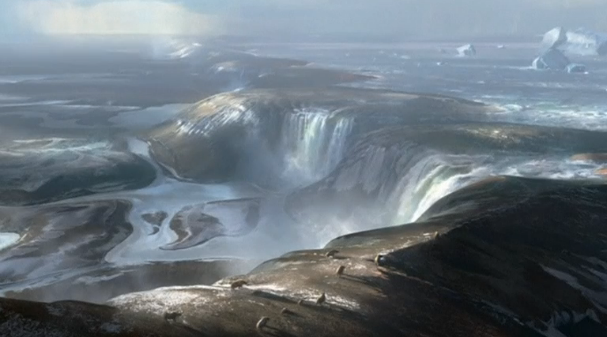
LONDON, ENGLAND, United Kingdom (Reuters) — Scientists have found evidence of how ancient Britain separated from Europe in what they are dubbing “Brexit 1.0” – a flooding event that happened in two stages thousands of years ago.
In research published in the journal Nature Communications on Tuesday (April 4), the scientists said they now have proof that the opening of the Dover Strait in the English Channel, severing the land between Britain and France, occurred in two episodes – an initial lake spill over, followed by catastrophic flooding.
“We think of Britain as an island separated from continental Europe. But 450,000 years ago Britain was actually connected to France by a land-bridge that stretched from southern England, from Kent, to north-west France,” Sanjeev Gupta, a professor at Imperial College London who co-led the work, told Reuters TV.
The first pieces of the puzzle came some 10 years ago, when researchers found geophysical evidence of giant valleys on the seafloor in the central part of English Channel. They believed these valley networks were evidence of a megaflood gouging out the land, probably caused by a breach in a chalk rock ridge joining Britain to France.
“This rock ridge would have been made of chalk, so the famous White Cliffs of Dover would’ve actually stretched all the way across to France,” said Gupta.
In the new study, new geophysical data collected by colleagues in Belgium and France has been combined with seafloor data from Britain showing evidence of huge holes and a valley system located on the seafloor. This helped the team establish how the chalk ridge was breached.
“We discovered these giant holes that had been carved into the bedrock of the Dover Strait. These holes are up to a hundred meters deep and several kilometers in diameter,” Gupta added.
The ridge acted like a huge dam and behind it was a proglacial lake, the researchers explained. The lake overflowed in giant waterfalls, eroding the rock escarpment, weakening it and eventually causing it to fail and release huge volumes of water onto the valley floor below.
“And what likely happened was that these holes were carved much like a dam, water plunging over a dam, and eventually there was so much water coming over this rock ridge that it probably caused breaching of this dam and initial opening of the strait,” said Gupta.
Either way, the scientists said, if it was not for a set of chance geological circumstances, Britain may have remained connected to mainland Europe, jutting out into the sea like Denmark.
The researchers still have no exact timeline of events, but said they now want to take and analyze core samples of the in-filled sediments in the plunge pools to try and pinpoint the timing of erosion and the filling of the pools.
They cautioned, however, that this next step will be tricky, since getting samples in the Dover Strait means navigating huge tidal changes and the world’s busiest shipping lane.
“What’s exciting about these plunge pools is they have a sediment record because after they were formed they were in-filled with sediment. And so what we’d like to go out there and do – and this will be challenging in the world’s busiest shipping lane – is to actually go and drill holes into these plunge pools close to where the Channel Tunnel is now,” said Gupta.
“Be able to drill down into the sediments, recover the cores. And the technology is now so advanced that we could actually date those sediments as to the timing of deposition. And so, from the base of the plunge pool we could get a timeline on when those plunge pools originally formed, and from the top of the in-fill of those holes we can get a sense of when those plunge pools were finally in-filled. So that would give us a timeline of when these dramatic events that have really shaped Britain’s history actually happened,” he said.







